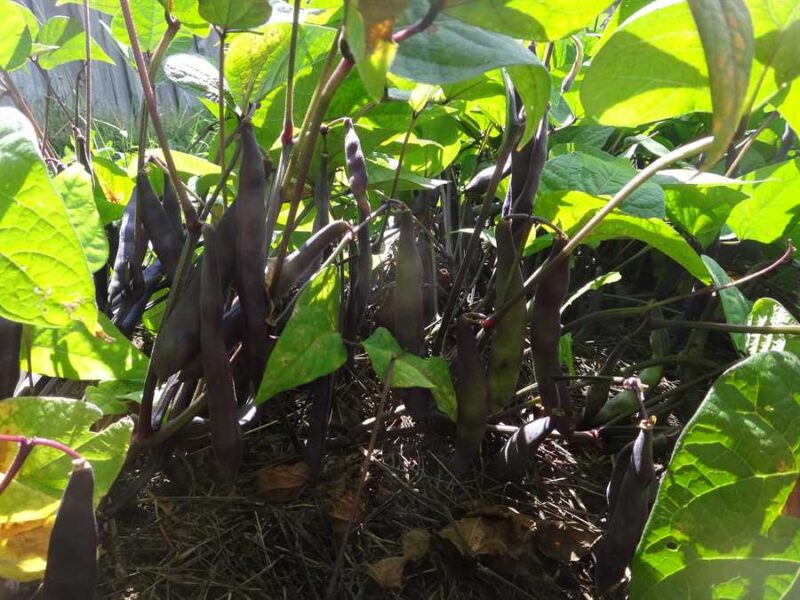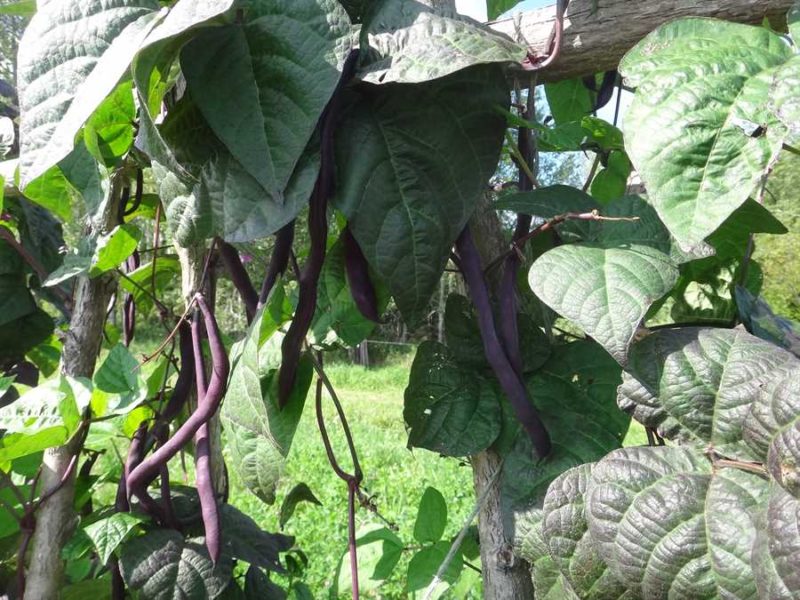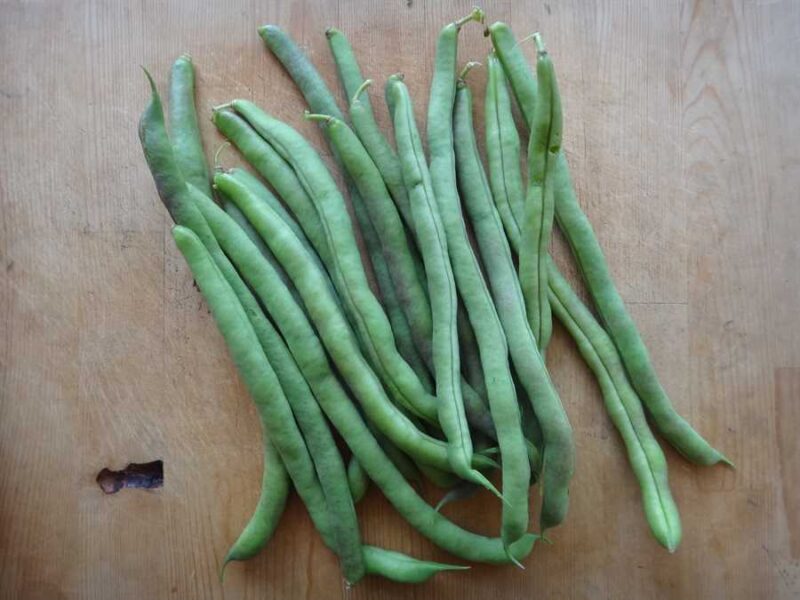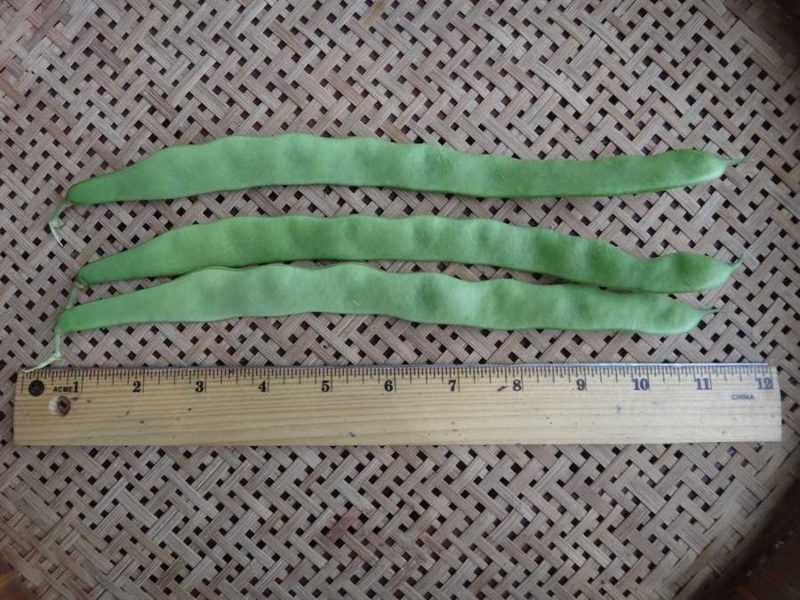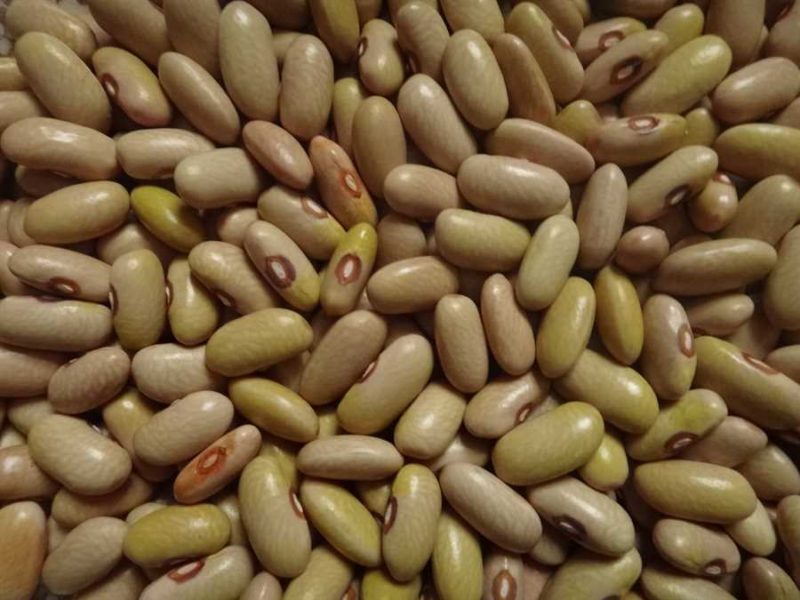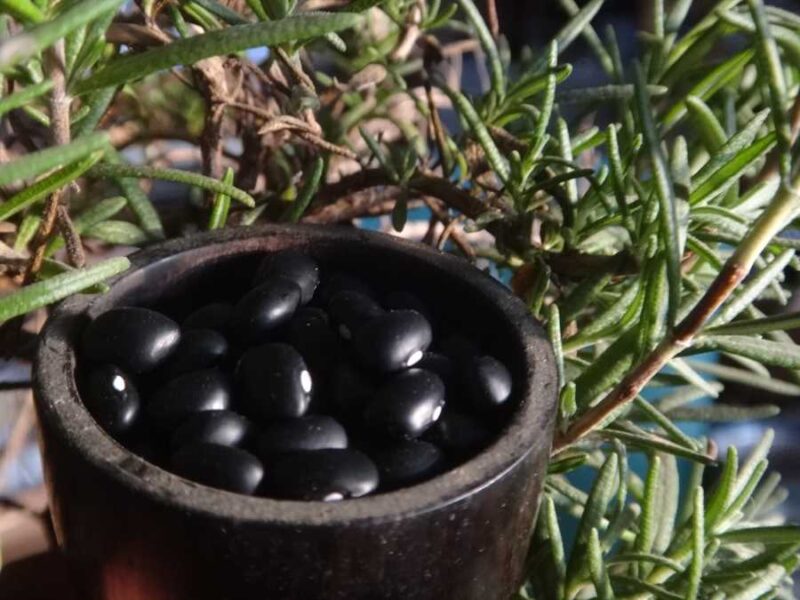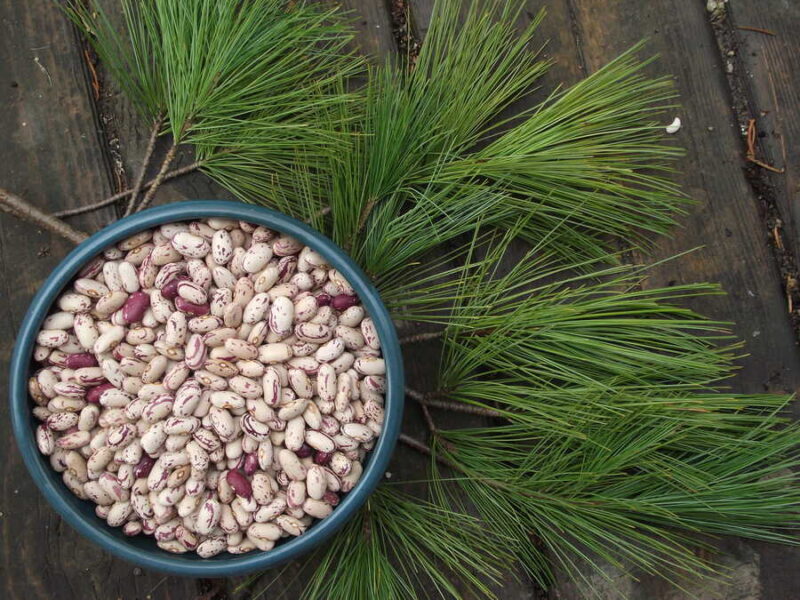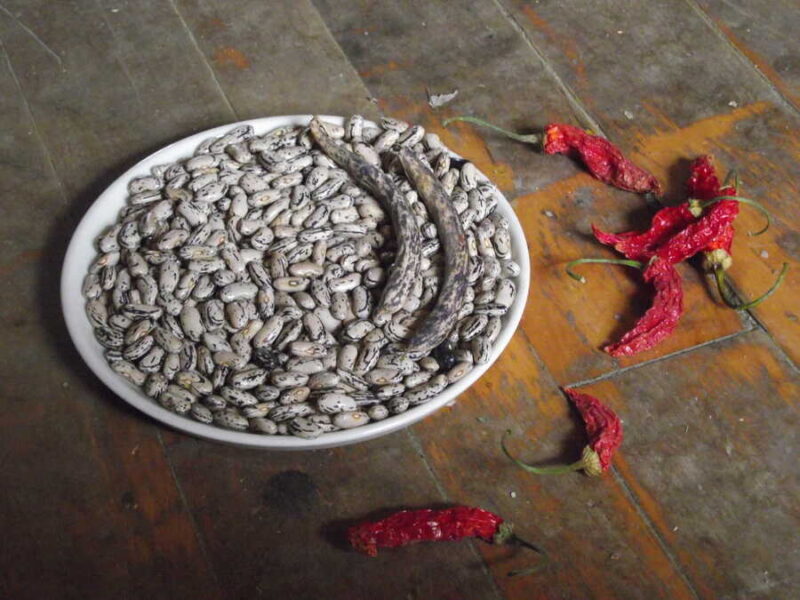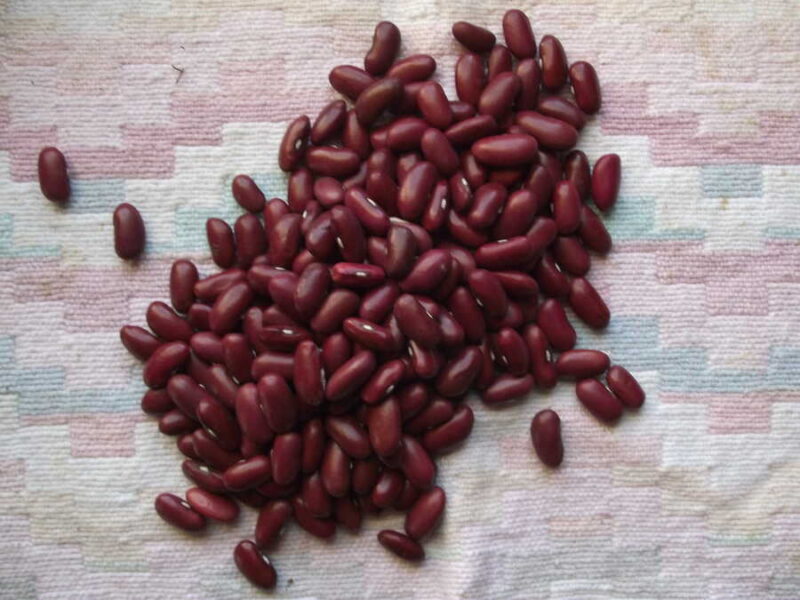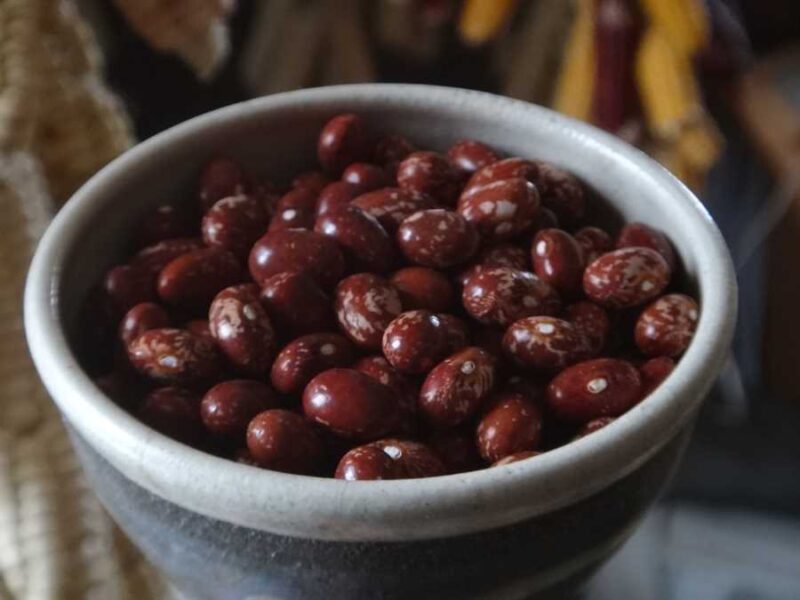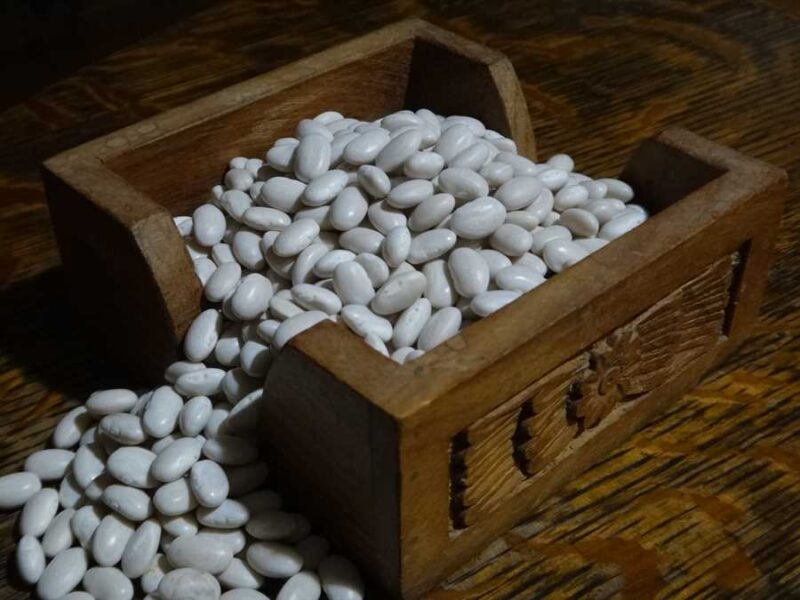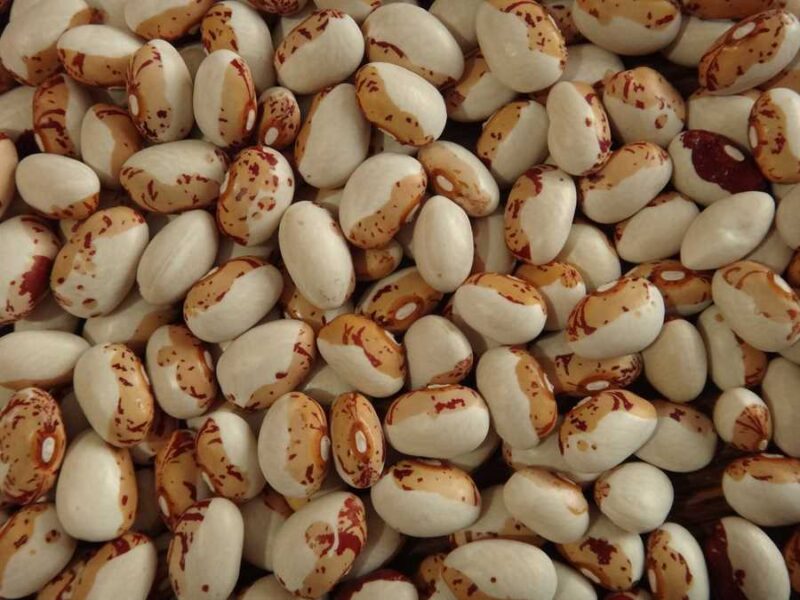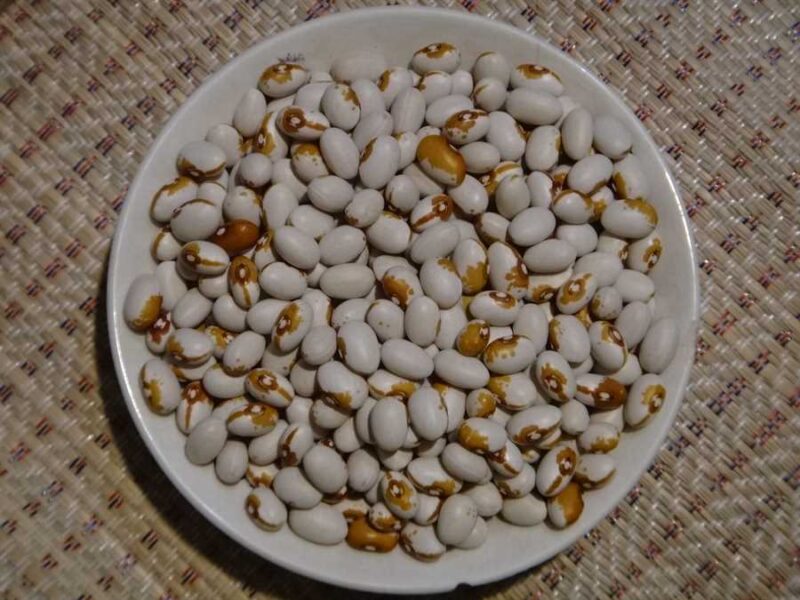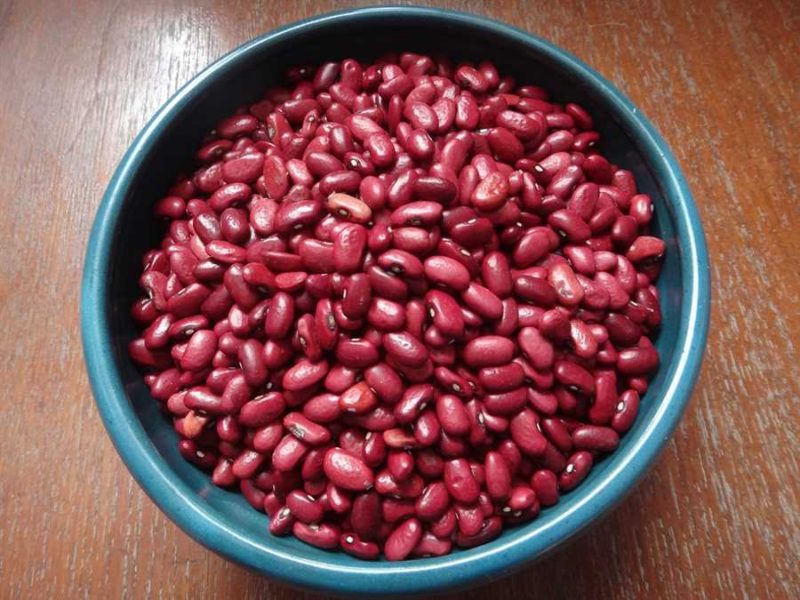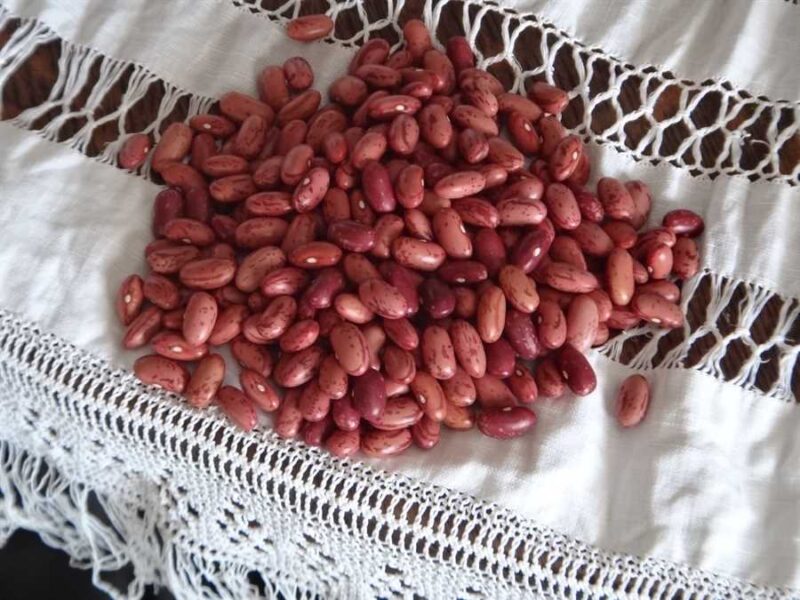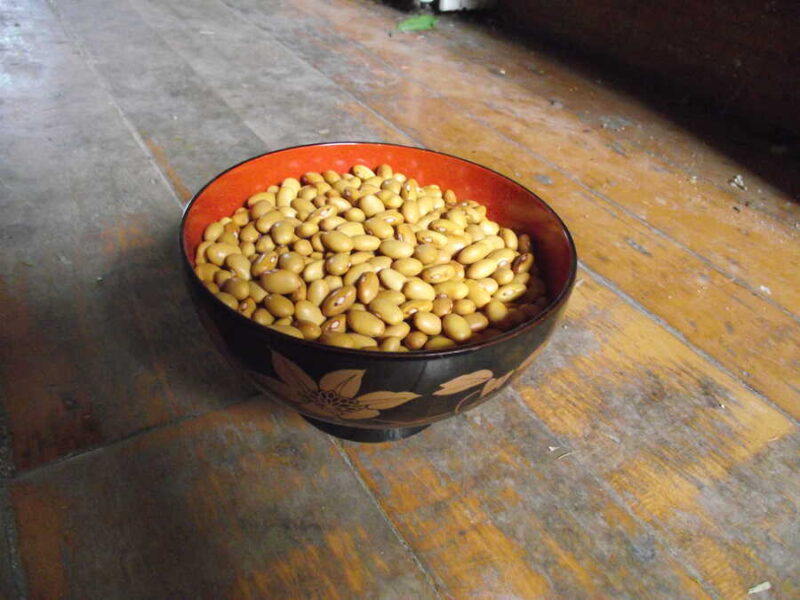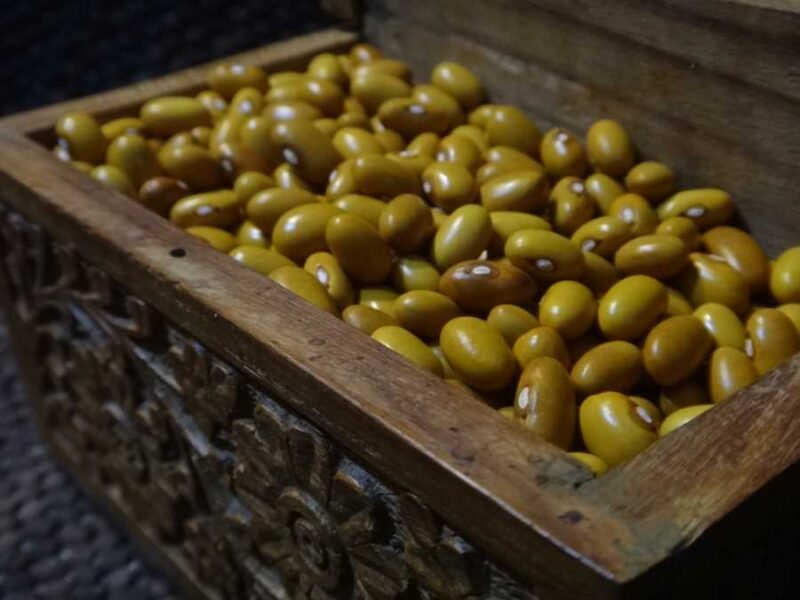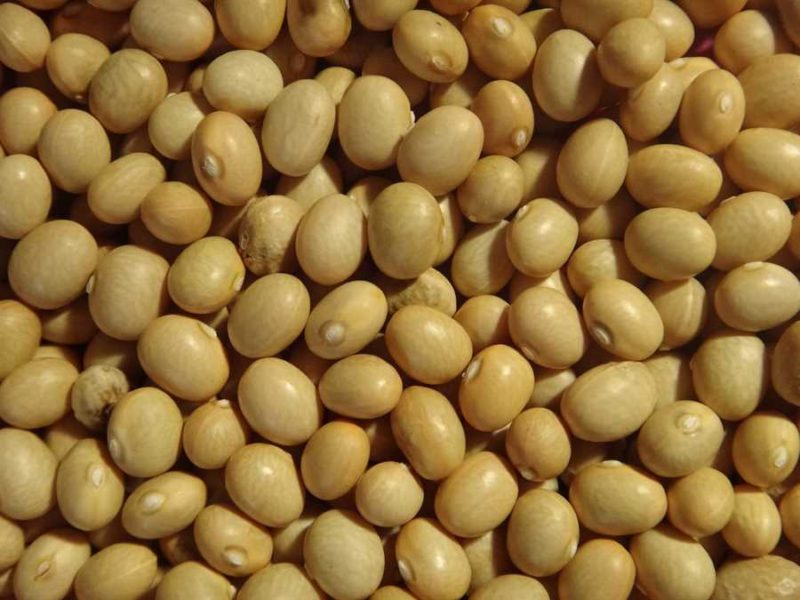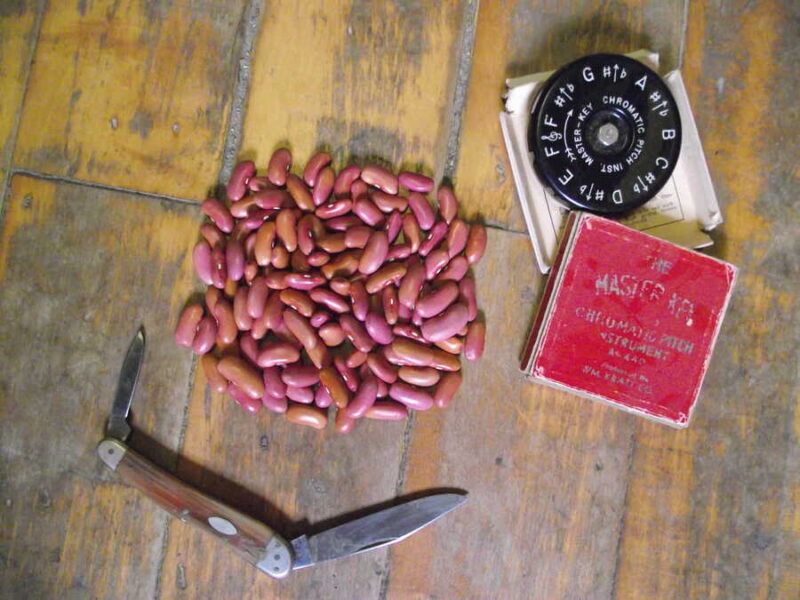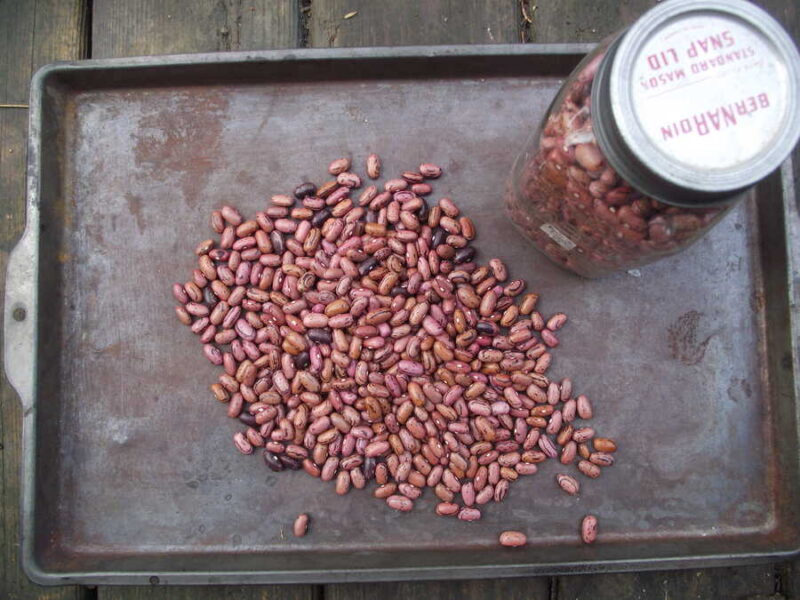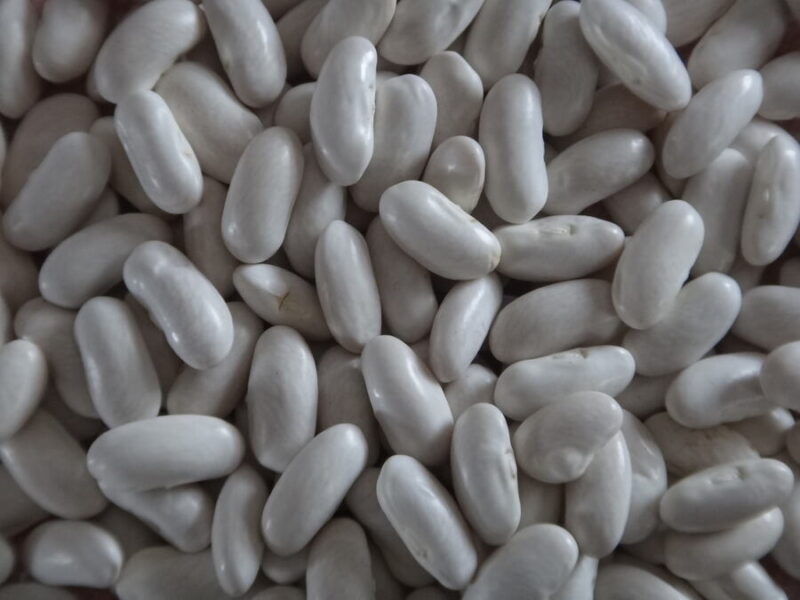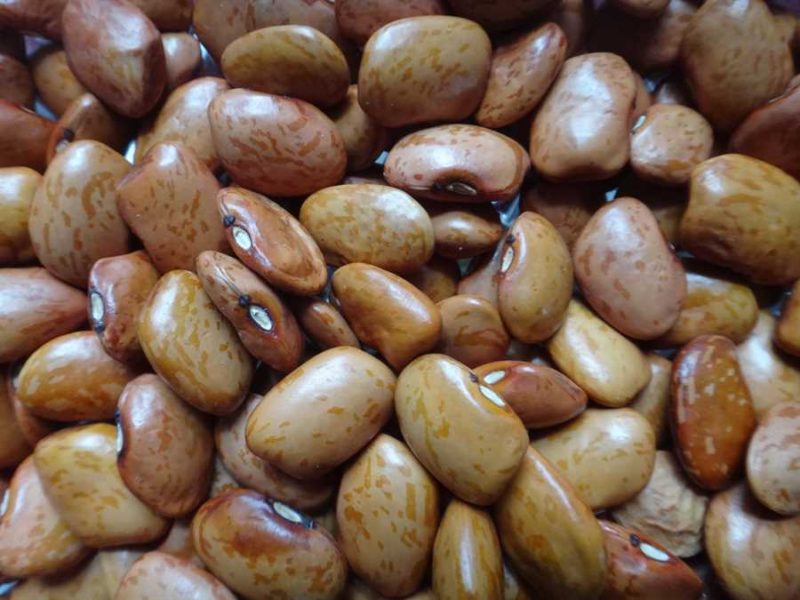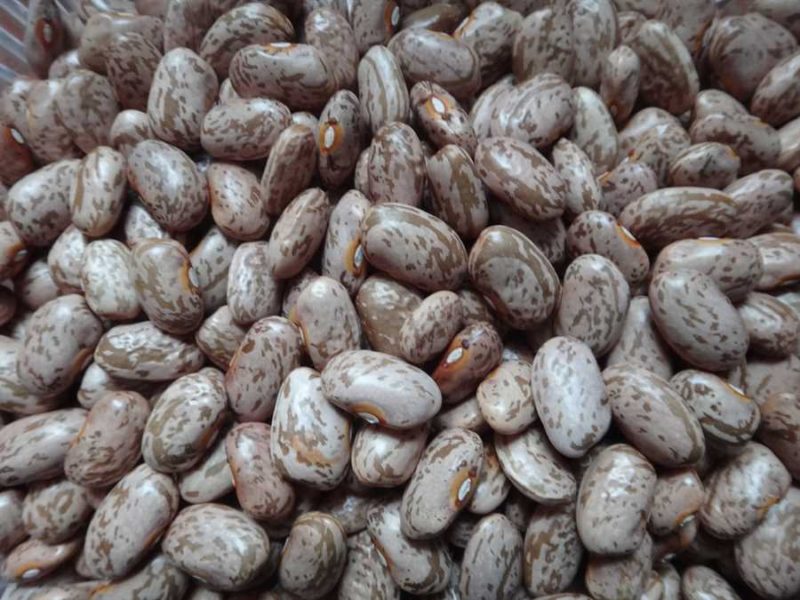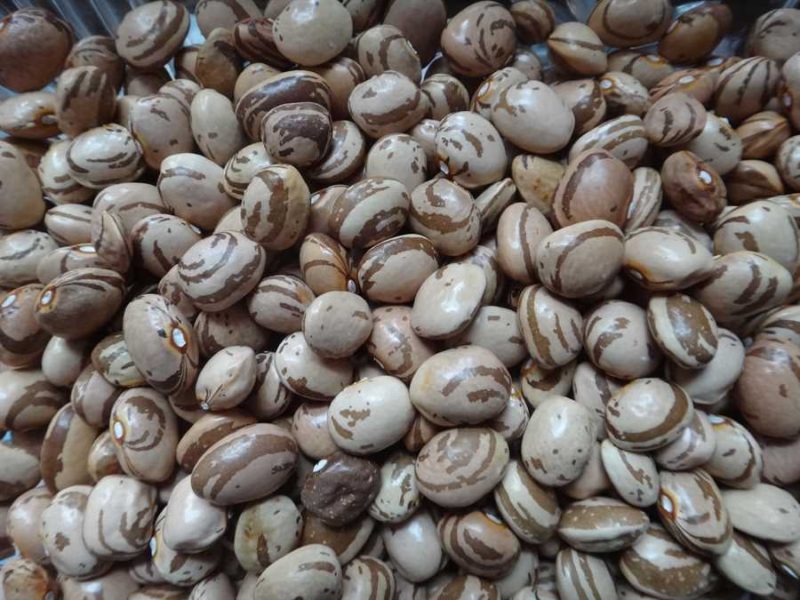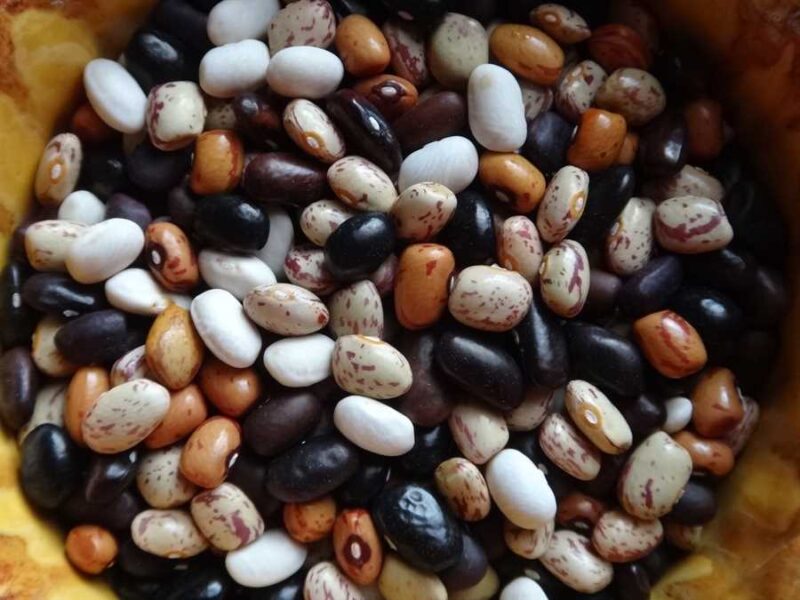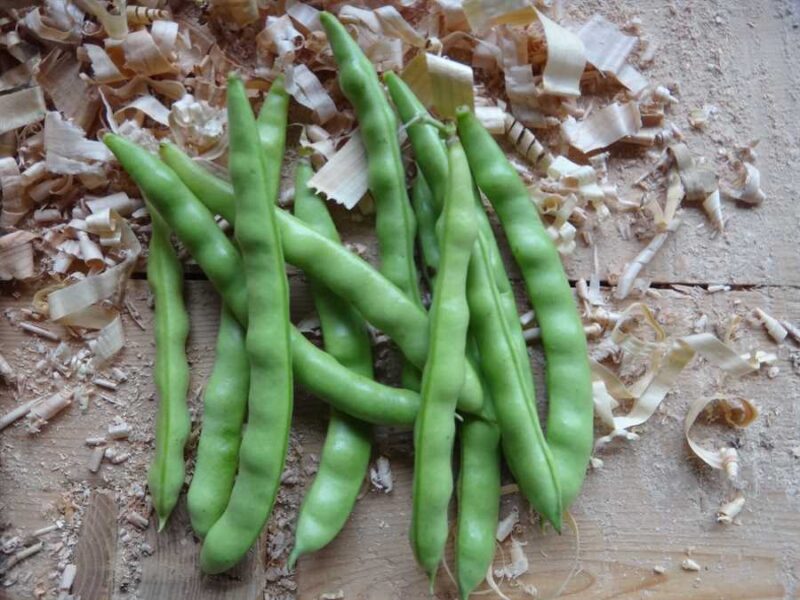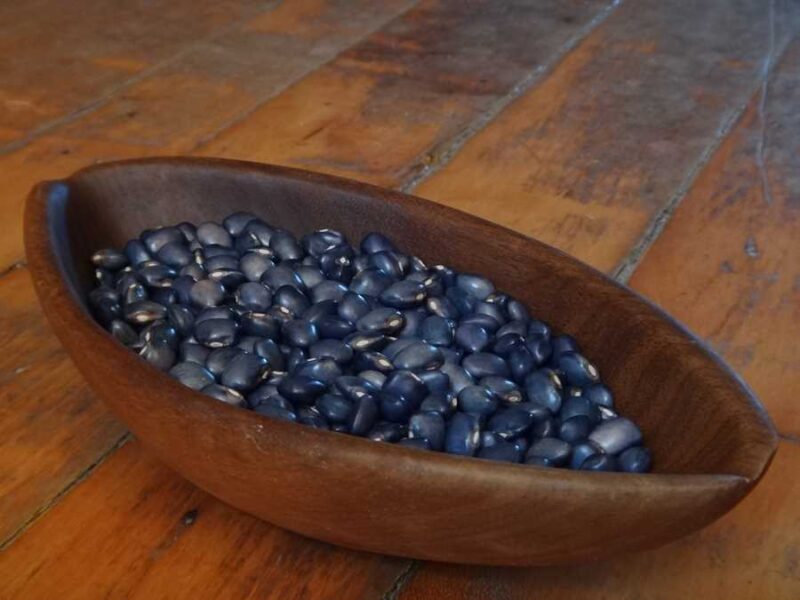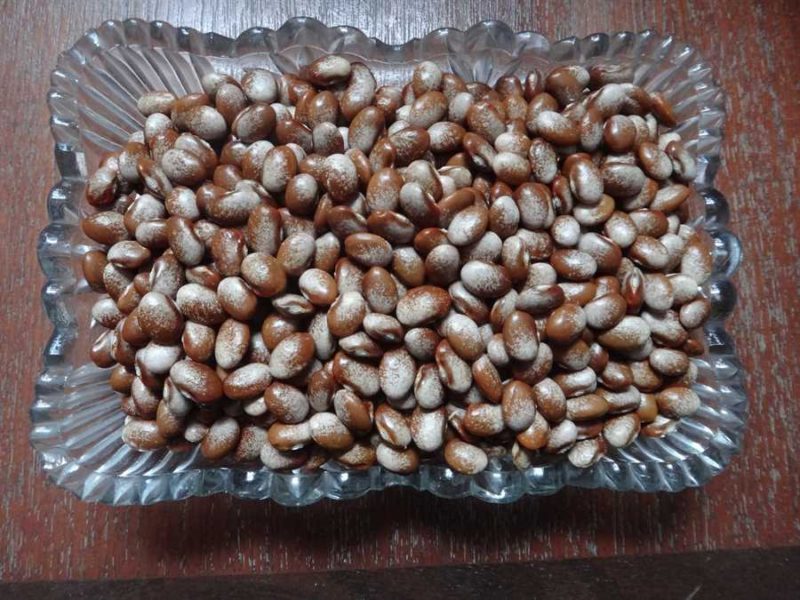(Phaseolus vulgaris )
Green beans and dry beans are the same species harvested at different stages of growth. Dry beans are not hard to grow in my zone 4 or 5 conditions. Plant them the same as green beans, but leave the pods to dry on the plants. I don’t water them. Ideally, wait to harvest until the pods are dry and brown or yellow and the seeds rattle inside them; however, rain can cause your beans to rot (or sprout), so you may need to pick the pods or cut the plants and spread them out indoors to finish drying. Even if they aren’t quite dry when rain or frost forces you to harvest, they will still usually produce viable seed.
-
Sequoia bean
- $4.00
- (Phaseolus vulgaris) Bush. A purple-podded Romano bean with flat pods. I like purple beans because I think they are easier to find on the plants (and because the way they change colour during cooking is really cool), and I like Romanos because they are large, so you don’t have to pick so many beans per quart! This one combines both features. 60 days to harvest, 90 days to maturity. 35 seeds/packet.
- Add to cart
-


Tendergreen bean
- $4.00
- (Phaseolus vulgaris) A classic bush green bean. Plentiful production of substantial, round pods. Tasty, reliable, easy to work with; what more is there to say? 35 seeds/packet.
- Add to cart
-
Blauhilde bean
- $4.00
- (Phaseolus vulgaris) Pole, 8-10’/2.6-3 m tall. Beautiful purple-tinged vines produce large, round purple pods. Don’t expect loads of beans all at once from this variety; produces slowly but steadily over a long season. 65 days to harvest, 100 days to maturity. 30 seeds/packet.
- Add to cart
-
Horst Pole bean
- $4.00
- (Phaseolus vulgaris) Pole, 8’/2.6 m tall. A long-season, but superb, green bean. Pods are substantial and stay tender even when quite large. The dry beans are very beautiful: long grey seeds with darker stripes. This variety complements Northeaster very well, beginning bearing just about when Northeaster finishes. I was given seed for this bean by Edith Martin of Durham, Ontario. It was passed down in her mother’s family (whose name…
- Add to cart
-
- Out of Stock
Northeaster bean
- $4.00
- (Phaseolus vulgaris) Pole, 8'/2.6 m tall. A Romano-type bean which bears large, flat pods 8” long by ¾” wide. Pick while pods are still flat, but seeds are just beginning to show. Early, bountiful, and delicious; probably my favourite green bean. 65 days to harvest, 95 days to maturity. 30 seeds/packet. Northeaster produces an abundance of beans over a relatively short period of time, which is ideal for preserving, but…
- Read more
-
-
Arikara Yellow bean
- $4.00
- (Phaseolus vulgaris) Bush; grown by the Arikara along the Missouri River in what is now North Dakota, so it matures in a short season. Large seeds in long straight pods look like yellow kidney beans. Included in the Slow Food Foundation’s Ark of Taste, this variety was collected by Lewis and Clark in 1805, and grown by Thomas Jefferson (who called it “Ricara”) in his famous garden at Monticello. By…
- Add to cart
-
Black Nicaraguan bean
- $4.00
- (Phaseolus vulgaris) Beautiful upright bushes are incredibly productive, keep their pods off the ground well, and are easily harvested by cutting the whole plants and trampling them, making this one of the easiest dry bush beans I’ve grown. A ‘black turtle’ type bean with matte-black small seeds. Beautiful.
- Add to cart
-
Borlotto del Valdarno bean
- $4.00
- Phaseolus vulgaris) – Bush dry bean. Plants are delightfully sturdy and upright, making them a bean grower’s dream to work with in the garden. A classic borlotti-type (also called a cranberry or horticultural bean), with pods splashed by pink and white seeds with dark red speckling. Borlottis are prized in southern Europe, particularly Italy, for their rich, creamy texture, which makes them specially preferred for many recipes. This variety was…
- Add to cart
-
Brighstone bean
- $4.00
- (Phaseolus vulgaris) Bush dry bean. Easy-to-grow variety; white seeds have dark speckling. A British variety, apparently salvaged from a shipwreck on the Isle of Wight in the 1800s, it was preserved by the Heritage Seed Library in the UK and has been enjoying a bit of a resurgence there. 30 seeds/packet.
- Add to cart
-
Dynasty bean
- $4.00
- (Phaseolus vulgaris) – A cool new superstar bean for serious bean-growers. To the eater, it just looks like your classic dark red kidney bean, but to the farmer… Developed by Dr. Peter Pauls and research technician Tom Smith at the University of Guelph in partnership with Hensall District Co-op using some fancy breeding called a conical cross, Dynasty yielded 15% more than previous varieties. A new variety usually manages more…
- Add to cart
-
- Out of Stock
Goose Gullet bean
- $4.00
- (Phaseolus vulgaris) A large-seeded bush bean with light speckling on a rich red-brown background. The story of the name is interesting: in 1755 the British, having freshly subdued the former French colony of Acadia (now Nova Scotia & New Brunswick), became distrustful of the Acadians’ willingness to be good British subjects. So, in one of the ugly chapters of Canadian history (the Grand Dérangement/ Acadian Expulsion), they rounded up many…
- Read more
-
-
- Out of Stock
Great Northern bean
- $4.00
- (Phaseolus vulgaris) Bush. This variety was first sold by Oscar H. Will, who ran a seed company in Bismark, North Dakota in the late 1800s and early 1900s. He seems to have been a great admirer of the Mandan, Hidatsa, and Arikara, Indigenous peoples of that area who practiced agriculture along the Missouri River. In his catalogues, he emphasized the need for seeds and agricultural practices adapted to his region,…
- Read more
-
-
- Out of Stock
Hidatsa Shield Figure bean
- $4.00
- (Phaseolus vulgaris) A large, beautiful bean from the Hidatsa people who lived along the Missouri River in what is now North Dakota. Mentioned in Buffalo Bird Woman’s Garden, an excellent book on Hidatsa agriculture from 1917, this bean is a bush with runners which would probably be happiest climbing some neighbouring corn plants. Soft and creamy when cooked, with a mild, delightful flavour.
- Read more
-
-
Kenearly Yellow Eye bean
- $4.00
- (Phaseolus vulgaris) This variety is from Kentville, Nova Scotia, but yellow eye beans are a classic type from the Northeast, especially associated with Maine. Productive bushes; beans are ideal for baking. There is an interesting range of shapes to the yellow “eye” markings over the hilum; study them carefully!
- Add to cart
-
Macuzalito bean
- $4.00
- (Phaseolus vulgaris) Bush with runners; this bean doesn’t need trellising, but it likes to sprawl a little. We grow it on its own, and also interplanted with corn, where it climbs a little but isn't vigorous enough to risk pulling down the corn plants. Macuzalito produces mostly red pods, though a few plants are always green-podded. Seeds look like miniature kidney beans. Easy to grow, harvest, and shell, we call…
- Add to cart
-
- Out of Stock
Mennonite K Triple A bean
- $4.00
- (Phaseolus vulgaris) This bean is an heirloom from Manitoba, and, as one would expect, is very early-maturing. It was grown by Katherine Thiessen who immigrated from the Black Sea area of southern Russia to near Winkler, Manitoba in 1890, when she was 14. Katherine’s daughter Anne grew her mother’s beans in her own garden after marrying in 1914 and moving to Springfield, Saskatchewan. She passed them on to her daughter,…
- Read more
-
-
Nez Perce bean
- $4.00
- (Phaseolus vulgaris) Bush-with-runners type plants have delicate, miniature foliage but set a great number of pods filled with small, golden-yellow beans. They mature uniformly enough to let you harvest whole plants. I found these at Adaptive Seeds, who say that their name suggests a connection to the Nez Perce of Idaho/eastern Oregon, but there is little documentation of it, so it may have reached that area later with settlers. However,…
- Add to cart
-
Öland Swedish Brown bean
- $4.00
- (Phaseolus vulgaris) Stout short bushes produce lots of small, plump, golden-brown seeds which taste wonderfully satisfying. This variety has been grown on the island of Öland, off the southeastern corner of Sweden, where bruna bönor have been being grown since the mid-1600s, and this type has been grown since at least 1885. Boarded on the Slow Food Foundation’s Ark of Taste, where they note that Öland actually has four varieties…
- Add to cart
-
- Out of Stock
Pois Fèves Laliberté bean
- $4.00
- (Phaseolus vulgaris) Tiny bushes look like a normal bean plant with shortened stems. This is an American-type “pea bean” (sometimes also called a "French navy bean"): round, pale yellow beans could easily be mistaken for a pea or soy bean. However if you look very closely you will see they are covered by a delicate tracery of veins, which is distinctively different from either of those species. Beautiful. An heirloom…
- Read more
-
-
Red Kidney bean
- $4.00
- (Phaseolus vulgaris) Distinctly on the paler end of red; however, large, handsome seeds show a subtle-but-pleasing colour variation of warm hues – from pinkish to more coppery. Quite trouble-free to grow: small, very upright plants set big pods which mature early. I received seed for this variety from Lydia Dyck of Durham, Ontario. 30 seeds/packet.
- Add to cart
-
Rosso di Lucca bean
- $4.00
- (Phaseolus vulgaris) Dry bean with excellent stout bushes which mature reliably. Strongly-flavoured pink beans with red speckles look just like what you would expect gourmet chefs with exquisite taste to recommend. A Slow Food Ark of Taste variety with its own dedicated Presidium, this is a landrace with a long history of cultivation near the city of Lucca in Tuscany. In the words of its friends at Slow Food: “Their…
- Add to cart
-
Bai Bu Lao bean
- $4.00
- (Phaseolus vulgaris) Pole bean from northern China with enormous, flat pale green Romano-type pods which get 10-12” long and stay tender. Impressively productive. Also called Lao Lai Shao.
- Add to cart
-
- Out of Stock
Dolloff bean
- $4.00
- (Phaseolus vulgaris) Pole, 8”/ 2.6 m tall. Flattish orange seeds with darker orange speckles resemble Lima beans. This bean entered Seed Savers Exchange Seed Network through Leigh Hurley in 1986; she had received it from Hattie Gray of West Burke, Vermont, who had grown it for years and used it for baked beans which she served at church suppers. Hattie told Leigh that it came from Roy Dolloff in Burke…
- Read more
-
-
- Out of Stock
Ga Ga Hut Pinto bean
- $4.00
- (Phaseolus vulgaris) Pole, 5-8’/1.6-2.6 m tall; grows well on corn. Pods filled with classic pinto beans, which have a smooth, buttery flavour; also just fine as a green bean, though it has strings. I acquired this bean from Heritage Harvest Seeds in Manitoba; they say it came from the Seneca. My favourite pinto. 85 days to maturity. 30 seeds/packet.
- Read more
-
-
- Out of Stock
Kahnawake Mohawk bean
- $4.00
- (Phaseolus vulgaris) Pole, 8-10’/2.6-3 m tall. Vigorous, productive vines produce orb-shaped tan beans with darker brown striping. One of our highest yielding beans, but be warned: they take their time getting established before bearing, and use every day of the growing season here. Thanks to an early frost I discovered that they will finish drying down just fine even after frost kills their leaves. The name of this bean refers…
- Read more
-
-
Mixed Cornfield bean
- $4.00
- (Phaseolus vulgaris) This “variety” is actually a mixture of a number of beans with dramatically different seed coats which have been grown together for a long time. I got it from Great Lakes Staple Seeds, but it has an interesting history before them. Apparently it was given to a Mrs. Effie Neeley (1908-2000) by her mother, Suzanne (née Wireman) Howard, after Effie married in the 1920s. Shortly afterword, she and…
- Add to cart
-
North Carolina Long E Greasy bean
- $4.00
- (Phaseolus vulgaris) Pole, 8’/2.6 m tall. If you are interested in growing Navy beans, but lack the space for them, this bean might be an ideal replacement; vigorous vines are more productive per square foot than bush beans, and it matures quite evenly, making it easy to harvest. 95 days to maturity. 35 seeds/packet.
- Add to cart
-
- Out of Stock
San Bernardo Blue bean
- $4.00
- (Phaseolus vulgaris) Pole 8’/2.6 m tall. Blue beans! They actually come in an interesting range of shades, from a pale gray/slate blue to a deep royal blue. Apparently the colour depends on the temperature while the seeds are growing; hotter weather makes them grayer, while cooler weather makes them bluer. All of them darken as they age, like most beans. We found that we got good blue colour by growing…
- Read more
-
-
Turkey Craw bean
- $4.00
- (Phaseolus vulgaris) Pole, 8-10’/2.6-3 m tall. A lovely bean with a buttery texture similar to pinto beans. Originally from the Cumberland Gap region between Virginia and Kentucky, they sometimes show that they are far from home by being a little late-maturing, but they still produce abundantly here. The name refers to the story of their origin: a hunter (who may have been a slave, the details are lost to history)…
- Add to cart


